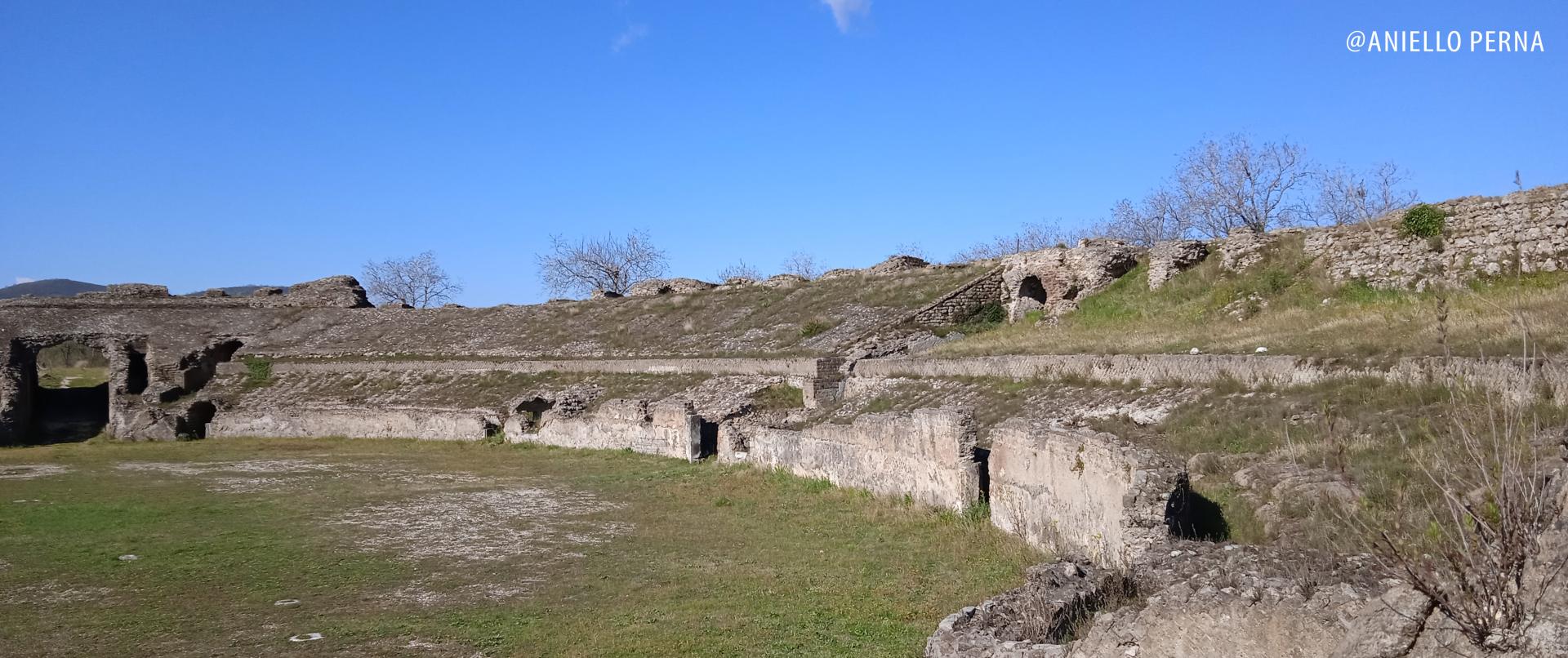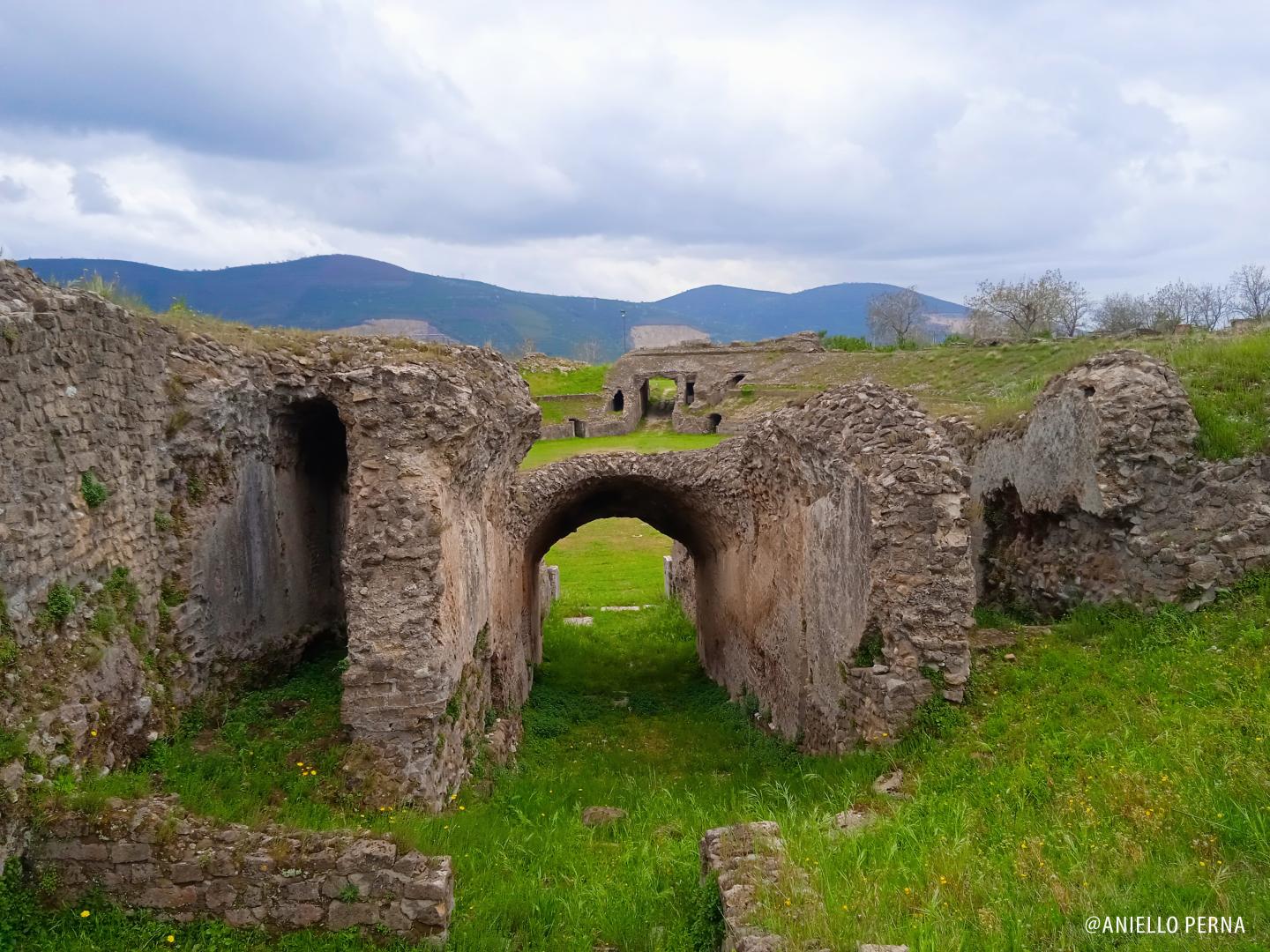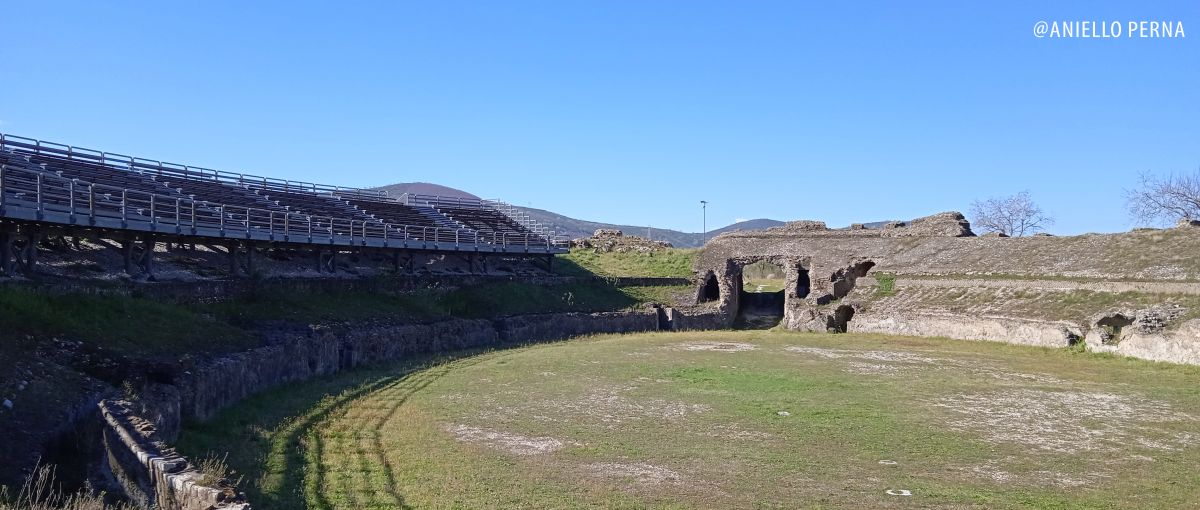There is one of the oldest amphitheatres built by the Romans, in Avella.
Dating back to the 1st century BC, it is located not far from the current town, in an area that corresponded to the beginning of the decumanus major of the then city of Abella. There the Roman engineers found favorable conditions for the construction of the new, imposing work: on one side, to the south-east, the remains of the walls of the Samnite settlement and, on the opposite side, a slope. Both the pre-existing structure and the natural element were exploited to create the large ellipse 60 meters long and 35 meters wide. The construction technique chosen was the opus reticulatum, common to the Pompeii amphitheatre of 70 BC.
Thanks to a depiction present on the base of a statue from the Antonine period, now exhibited in the historic centre of Avella, it is possible to know what the amphitheatre was like before time produced its destructive effects. The structure was imposing, with three tiers of steps with tuff seats. Parts of the lower and middle ones remain, while there are only a few traces of the upper one. The podium also remains. High-ranking people attended the shows from it. The two main vomitoria are also in good condition.
Today, in order to make the monument usable for musical shows, performances and events, metal steps have been installed and spaces have been created for services.
 Archaeological area of the monumental necropolis
Archaeological area of the monumental necropolis
The monumental tombs were lined up leaving the ancient city of Abella, on the road that reached Nola and its large and fertile plain. Over two thousand years later, they still rise majestically in the Casale area, to celebrate the memory of the deceased, certainly rich and powerful, in whose honor they were built between the late republican age and the beginning of the imperial age, that is, between the 1st century BC. and the 1st AD.
These are four mausoleums, substantially well preserved, built with various materials, including gray tuff for the external covering, and using both opus incertum and reticulatum. Each of them is made up of two overlapping parts. The lower section, with a quadrangular plan and supported on clay bricks, contains the rectangular cell, of small dimensions, in which the cinerary urn and the funerary objects were placed. The upper, cylindrical section ended with a spire surmounted by an aedicule. All the tombs are surrounded by an enclosure within which plants, vases and various ornamental objects were placed.
The tomb structures present characteristics common to other contemporary necropolises brought to light in various parts of Campania. However, due to the excellent conditions in which they have come down to us and considering their contents, they were particularly valuable in the reconstruction of the funerary rites of the historical period of reference.
Info and visit
The amphitheater and the necropolis are an integral part of the guided tour with shuttle transfers which also includes a visit to the castle of San Michele.
Visits are possible every day from 9.00 to 12.00 only by reservation at the numbers 081 8259320 /
380 4309703 / 320 9479173
Ph:@Aniello_Perna



Comments powered by CComment